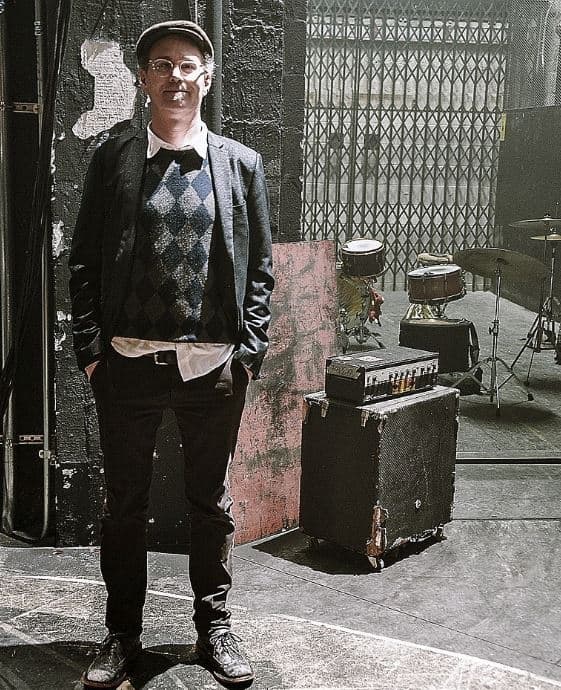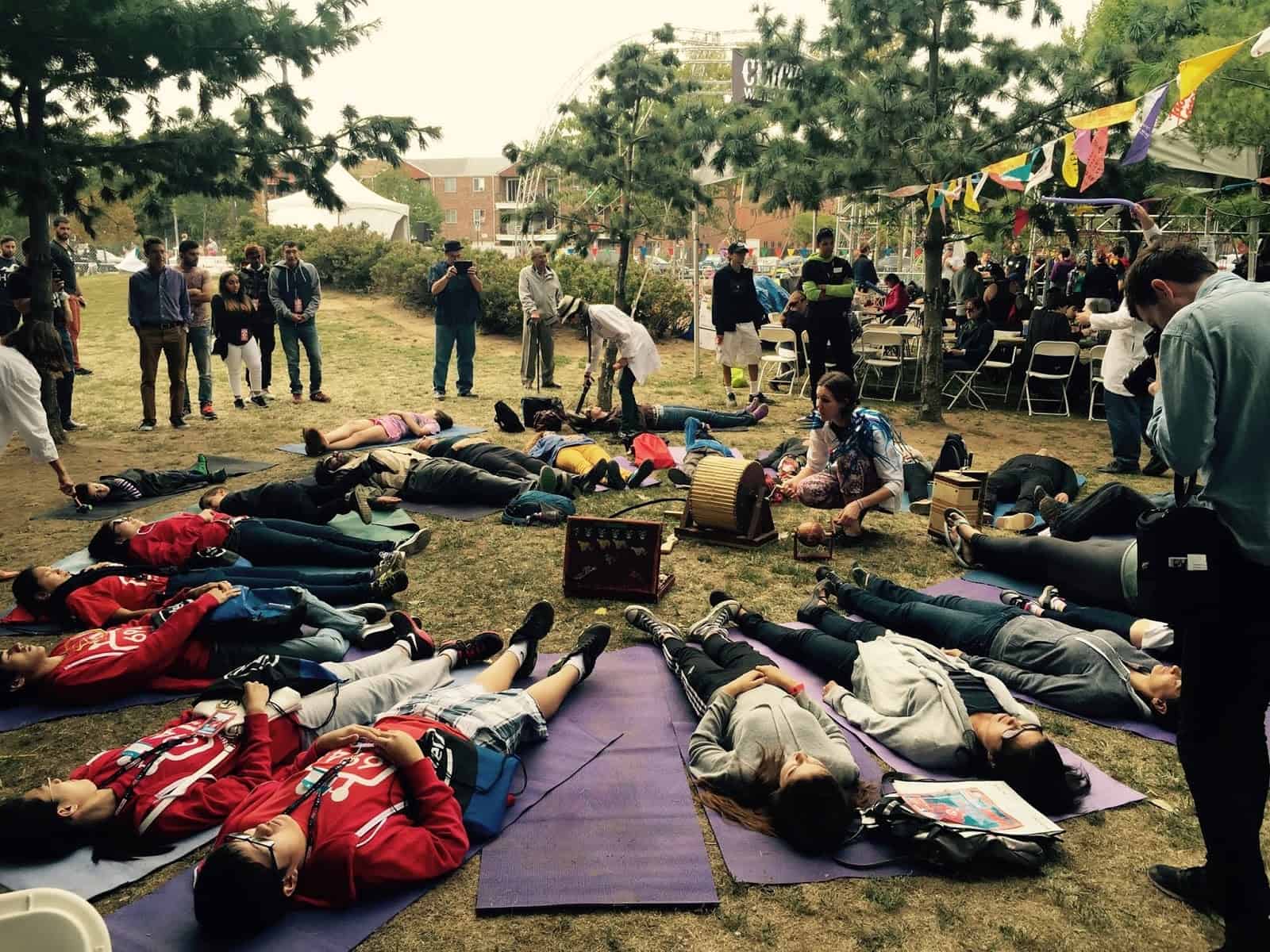Drummer Kenny Wollesen is as in-demand as a drummers gets. He’s recorded extensively with Tom Waits, John Zorn, Bill Frisell, Sex Mob, Norah Jones, Sean Lennon, to name just a few. His unending depth in feel, groove, and intuitive response is what sets him apart, and gives him the versatility to feel at home in almost any genre of music. But like any busy New York musician, there are side projects. And like any great musician, that side project is the thing that you really want to see. For Wollesen, that project is known as Sonic Massages.
Picture this: a group of about 7 or 8 musicians, dressed in white lab coats with the moniker “Wollesonic Labs” emblazoned on the lapel, using a small moving truck’s worth of homemade instruments, broken umbrellas with whirly-gigs on the end that whiz, egg-beats that chime, a mouse-trap attached to a door stopper; it’s a menagerie that is a dream-like mix between Harry Partch’s instrumentarium and Alexander Calder’s mobiles. The audience sits, or usually lies, on the ground, with their eyes closed, while the wildest and strangest sounding instruments whiz and whirl past their ears, as foreign sounds transport people into a strange land, with no direct place of reference.
Though not intended as a visual art show, it’s quite a strange site to behold. It’s important (though not an enforced rule, but a suggestion), that the audience keep their eyes closed. “I think you hear better with your eyes closed. At least I do,” Wollesen says about it. “But most people don’t make it the whole time with their eyes closed. ‘Cause visually, it’s kind of crazy to look at. It becomes like a ballet. The music is coming from all over the place, from below and above.”

Originally from the bay area, Wollesen wound up working with Tom Waits in the early 90s. Waits lives in Sebastopol, a small northern Californian town that was a hotbed for musical instrument builders. People like Richard Waters, Bart Hopkin, and Tom Nunn all lived in this small town, and Waits (of course) was friends with all of them. While working with Waits, he was introduced to these instruments and their colorful inventors. Years later, John Zorn asked Wollesen to make some instruments for a piece he was writing. Wollesen drew upon the instruments he’d seen while working with Waits, and tried his hand at making his own creations. “For an instrument, all you need is something that’s super rigid, and something that’s super flexible, and those two things together make sound. A reed, a string, a drum head.”
The first instrument that he made was called the Sleep Grinder – a crank box, “powered” by the guts of a meat grinder, that creates a very mellow, hypnotic, and meditative sound. The Sleep Grinder is small, and he found he could play it on his back, lying down. With his eyes closed, it’s rhythmic repetition hypnotizing, he made more of them, developing a small Sleep Box army. He was just making them for fun, because they were weird, and nice. To hear him talk about the process it just seemed…. natural and obvious. In the mid 2000s, he participated in a residency at Mass MoCA (Massachusetts Museum of Contemporary Art), when he created and developed a series of instruments, all weirder and stranger than the next, with a group of other like-minded musicians. They decided to put on a concert with all these creations, and thus was born the Sonic Massage.
Despite the name, he doesn’t see the project as a form of acoustic massage, or meditation. “Sound baths are popular these days, it’s about specific notes that resonate in your chakra, and that’s cool, but Sonic Massage is more about music as a concert, as a human force.” It revels in finding a new way for audience members and musicians alike to experience the musical act. One of the things that keeps Wollesen fascinated with the group is that nobody experiences the same “concert” — not even the musicians truly know the full extent of what’s happening. Many of the instruments are so tiny and quiet, that the only person that can hear it is the performer and the audience member (who has the tiny instrument playing, literally, a few inches from their ears). “A Lot of the sounds are unidentifiable. There’s one instrument that sounds like a dog sniffing your face. And the reality is, it’s the farthest thing from that. It’s a giant big horn!”
“The funny thing is that now, we’ve been doing this so long, it’s like a band. Everybody performing kind of just knows what everybody else is going to do, and we anticipate everybody’s next decision. But none of us can actually hear the whole thing, or what we’re doing! It’s really great, to be like a band with these strange instruments.”









